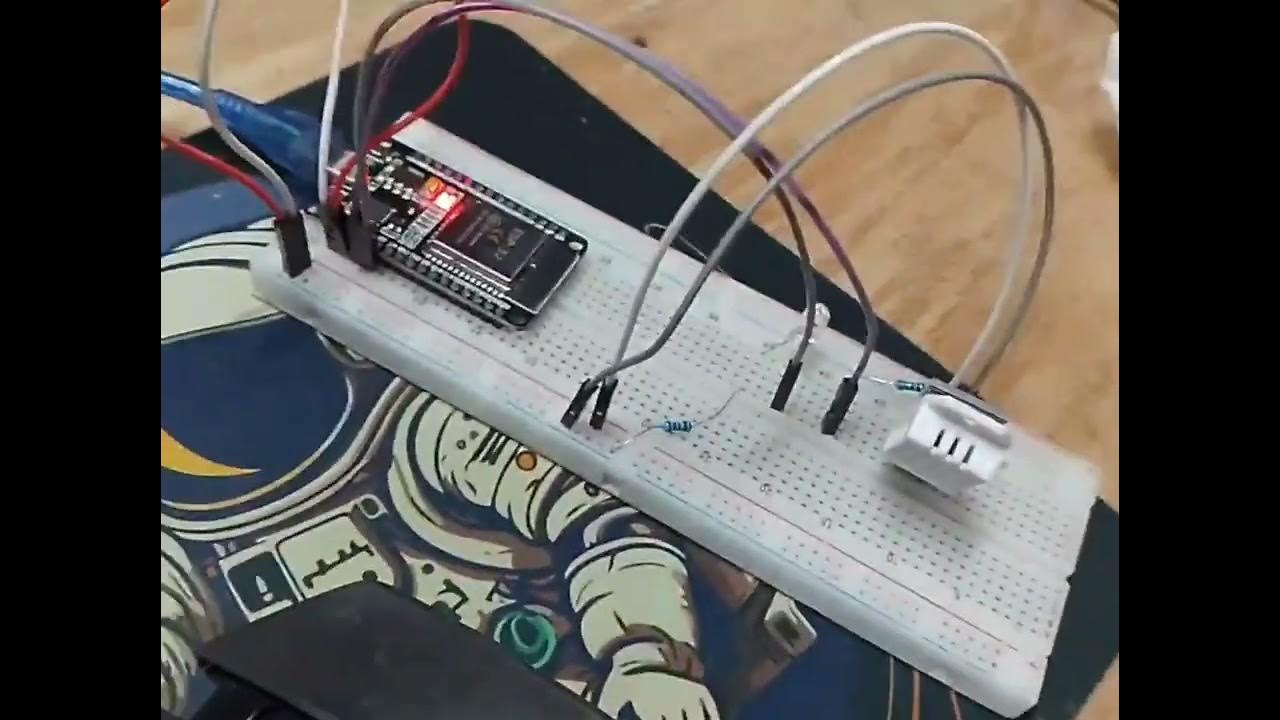ESP32 dengan RTOS
Summary
TLDRThis tutorial focuses on hands-on implementation with the ESP32 microcontroller, guiding users through controlling digital outputs like LEDs and multitasking techniques. The speaker demonstrates various pin configurations and output controls, explaining how to handle multiple tasks concurrently, likely using a real-time operating system like FreeRTOS. Through trial-and-error testing, they show how to troubleshoot and optimize code for LED control, offering a practical, beginner-friendly approach to embedded systems programming. The session emphasizes experimentation and adapting code to meet specific needs, with a focus on learning by doing.
Takeaways
- 😀 The tutorial focuses on practical implementation using an economic system, with two modes for application, such as ADC (Analog to Digital Converter) and DAC (Digital to Analog Converter).
- 😀 The instructor introduces the concept of connecting to a control system, specifically focusing on the ESP32 platform.
- 😀 The lesson highlights the importance of simplicity, starting with basic components such as LED lights, before progressing to more complex tasks.
- 😀 The script involves setting up a project where LED lights will be controlled through a microcontroller, testing various pins for output.
- 😀 The user is encouraged to experiment with connections, despite some components being non-essential to the process at this stage.
- 😀 The instructor uses practical examples like color-coded LEDs to illustrate the wiring and output testing process.
- 😀 Code snippets are shared, showing how to set up output pins and control LED states, such as turning LEDs on or off.
- 😀 The tutorial introduces the concept of multithreading or multitasking, allowing different tasks (like LED control) to run simultaneously without interference.
- 😀 There is an emphasis on experimenting with code in real-time to adjust the timing and functionality of the LED tasks.
- 😀 The instructor demonstrates how different logic levels can affect the task performance, advising on adjustments based on project needs and constraints.
Q & A
What is the focus of the current session in the script?
-The focus of the session is on implementing practical examples using ESP32 and related components like ADC and DAC to demonstrate real-world applications of basic electronics and programming.
What is the significance of choosing ESP32 in this implementation?
-ESP32 is chosen because it offers versatility for learning, especially with features like ADC (Analog to Digital Converter) and DAC (Digital to Analog Converter), making it suitable for hands-on practice in embedded systems and electronics.
What does the speaker mean by 'connection' and why is it mentioned?
-The speaker refers to the need for establishing connections between different components, like the ESP32 and other hardware such as LEDs, even though these connections are not being used immediately in the session.
Why is the speaker not using WiFi in the implementation?
-The speaker mentions that they are not using WiFi in this session, focusing instead on simpler tasks and core functionalities of ESP32, specifically for understanding hardware control like LED output and GPIO pins.
What is the purpose of using LEDs in the demonstration?
-The LEDs are used as outputs to visually demonstrate the behavior of the system. The speaker experiments with controlling LEDs, either turning them on or off, to practice handling basic electrical components.
What is the significance of the speaker switching between different LED colors?
-Switching between different LED colors helps demonstrate how the ESP32 can control multiple outputs and how varying behaviors (like LED colors) can be used to represent different system states or conditions.
What does the speaker mean by 'multitasking' in the context of this session?
-Multitasking refers to the ability of the ESP32 to handle multiple tasks simultaneously, like running different processes or controlling multiple outputs (such as LEDs), which is a key feature of the device in more complex applications.
How does the speaker demonstrate task switching or multitasking in the code?
-The speaker showcases multitasking by running functions to handle different tasks concurrently, like toggling LED states and testing how the system manages multiple operations at the same time.
What is the role of 'tasks' as mentioned by the speaker in the session?
-Tasks in this context refer to specific functions or operations that the ESP32 handles, such as turning an LED on or off. The speaker demonstrates how tasks are managed in code to ensure correct execution and timing.
What is the next step after this session, according to the speaker?
-After this session, the speaker plans to extend the knowledge to implement more complex projects, like integrating the ESP32 with a smartphone, focusing on more advanced use cases of multitasking and device control.
Outlines

This section is available to paid users only. Please upgrade to access this part.
Upgrade NowMindmap

This section is available to paid users only. Please upgrade to access this part.
Upgrade NowKeywords

This section is available to paid users only. Please upgrade to access this part.
Upgrade NowHighlights

This section is available to paid users only. Please upgrade to access this part.
Upgrade NowTranscripts

This section is available to paid users only. Please upgrade to access this part.
Upgrade NowBrowse More Related Video
5.0 / 5 (0 votes)





